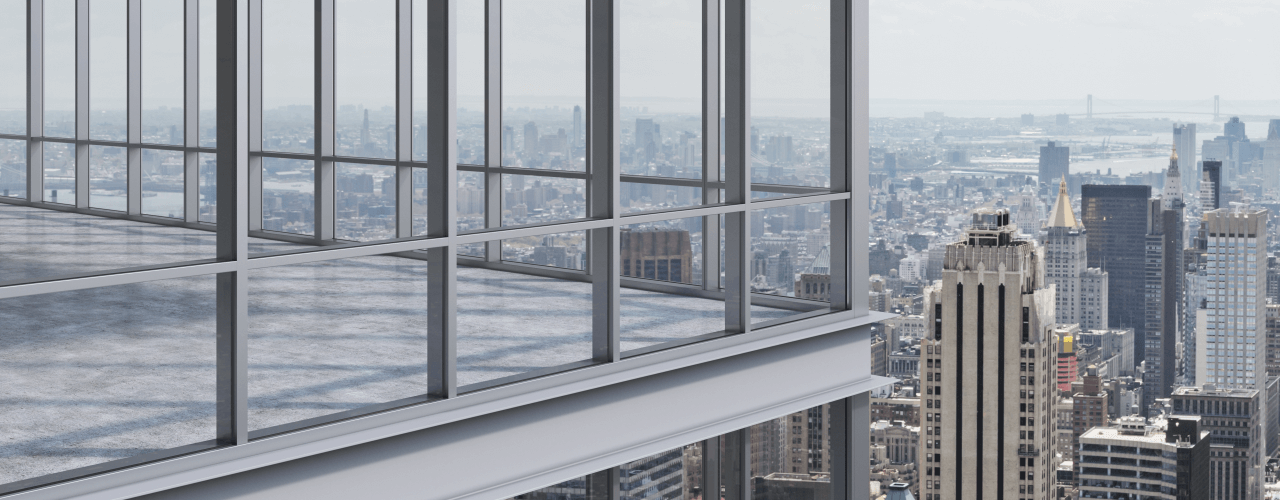Creating a long-term relationship between landlord and tenant begins with using a lease that’s a win-win for both sides. Building owners want to maximize income to boost yields, cap rates, and property value. Tenants look for commercial leases that match their type of business, monthly cash flows, and seasonality. Here’s a list of the five different types of commercial real estate leases and how they work.
Percentage Lease
Rent is calculated using a base rent + a percentage of monthly sales, usually over certain sales threshold. Percentage leases are often found in large shopping centers and grocery stores.
Example: Base rent is $5,000 per month and the percentage part of the rent is 5% after $50,000 in monthly sales. If the tenant has $75,000 in sales this month the rent would be: $5,000 base rent + $1,250 percentage rent ($75,000 – $50,000 threshold x 5%) = $6,250 for that month.
Net Lease (aka Single Net Lease)
Tenant pays base rent + proportional share of property taxes.
Example: Tenant leases 10% of the building and pays a base rent of $5,000 per month. Property taxes for the entire building are $10,000 per year. Tenant’s monthly net lease rent would be: $5,000 base rent + $83.33 share of property taxes ($10,000/12 months x 10%) = $5,083.33 monthly net lease rent.
Double Net Lease (NN)
Tenant pays base rent + proportional share of property taxes + proportional share of insurance premiums.
Example: Annual insurance premium for the entire building is $2,000. Tenant’s monthly double net lease rent would be: $5,000 base rent + $83.33 share of property taxes + $16.67 share of insurance premium ($2,000/12 months x 10%) = $5,100 monthly double net lease rent.
Triple Net Lease (NNN)
Tenant pays base rent + proportional share of property taxes + share of insurance premiums + share of maintenance costs.
Example: Building maintenance costs are $24,000 per year. Tenant’s monthly triple net lease rent would be: $5,000 base rent + $83.33 property tax + $16.67 insurance + $200 share of maintenance ($24,000/12 months x 10%) = $5,300 monthly triple net lease rent.
Full-Service Gross Lease
Tenant pays a fixed monthly rent and landlord pays for the operating costs. However, landlords will “factor in” the operating expenses into the gross lease amount.
Example: Landlord estimates the proportional operating expenses for the tenant are $300 per month but decides to add in $100 per month more in case the estimates are off. Tenant’s monthly full service gross lease would be: $5,400 per month.
True-Up Of Actual Operating Expenses
When commercial leases are negotiated the variable charges of the monthly rent – property tax, insurance, and maintenance – are based on estimates for the year. At the end of each year, usually by March of the following year, commercial leases are ‘trued up’ to match the true expenses.
A true-up of a commercial lease is done by comparing the estimated expenses for the year to the actual expenses. If expenses were higher than estimated the tenant is charged an extra one-time true-up rent amount. If they’re lower than estimated the tenant receives a credit to their rent.
Example: For the preceding year tenant paid $300 per month in estimated variable charges. The tenant’s share of actual charges was $350 per month. Tenant’s true up fee would be: $600 ($350 actual – $300 estimated x 12 months).
Other Commercial Lease Terms to Know
Base rent
The minimum amount of rent a tenant pays each month. Some commercial leases add other expenses onto the monthly base rent such as CAM.
CAM
Common area maintenance fee. Building owners use a CAM charge to pass through their operating expenses – things like landscaping, outside lighting, lobby security, property management, taxes, and insurance – to each tenant. CAM is based on the share of the building that the tenant is renting. For example, if a tenant leases 1,000 square feet in a building with 10,000 square feet of rentable space, they are leasing 10% of the space. If operating expenses for the entire property are $3,000 per month then the tenant’s CAM would be $3,000 x 10% = $300/month.
Load factor
Calculated by combining rentable square feet plus the amount of common area square feet that benefits a tenant. Using the example above, let’s assume the building is 12,000 square feet in size: 10,000 square feet are rentable and 2,000 square feet are common areas such as the lobby, elevators, and public restrooms. The load factor of the building is 12,000 total square feet/10,000 rentable square feet = 1.2.
Negotiate Like A Pro
Unlike non-commercial leases where almost everything is set in stone, commercial lease agreements always can be negotiated. Think of these 5 main types of commercial lease agreements as a starting point. It’s OK to choose terms and conditions from each lease type to create your own customized commercial lease that’s a win-win for both the landlord and the tenant.








